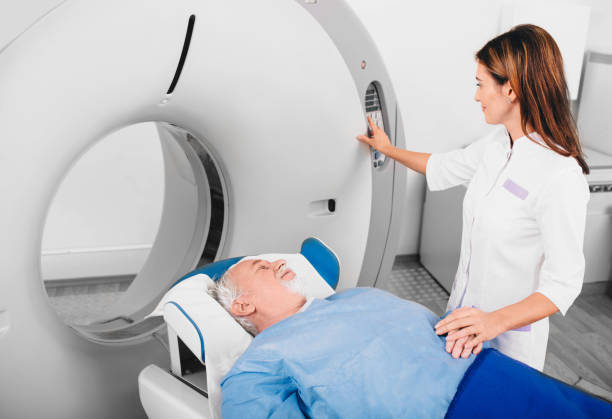A computer-generated (AI) tool that was developed by The University of Texas Health Science Center in San Antonio accurately counts brain lesions in MRI scans in just a few minutes. After it has been adjusted to the clinical setting and MRI scans, the AI tool will allow neuroradiologists assess patients’ brain disorders in the earlier stages.
“Certain kinds of brain lesions are tremendously difficult to quantify without AI,” said researcher Mohamad Habes, PhD, of the health science center’s Glenn Biggs Institute for Alzheimer’s and Neurodegenerative Diseases. Habes is an assistant professor of radiology and director of the Glenn Biggs Institute neuroimaging core.
In a paper published 24 April within JAMA Network Open, Habes and colleagues from eight different institutions showed the AI tool’s effectiveness to identify and count the enlarged the perivascular spaces (ePVS’s). These spaces, containing cerebrospinal fluid, are located around veins and arteries and are a signpost of cerebral small-vessel diseases that may lead to strokes and dementia. This study is a follow-up review of 1,026 people who took part as part of the Multi-Ethnic Study of Atherosclerosis (MESA).
We’ve created a novel deep-learning technique that can precisely measure every perivascular area that has been enlarged within the brain. This tool provides us with maps of the patient’s disease in the small vessels.”
Doing a laborious job and achieving it
Prior to this device, ePVS’s weren’t considered because of the difficulty in the process of counting them based using MRI scans.
“On average a middle-aged person might have maybe 500 or 600 of these small spaces on an MRI,” Habes explained. “Think about a neuroradiologist who is going to sit down and count all of them. That’s not really going to happen. He or she would spend one or two hours per scan, or even more, and that amount of laborious effort is not feasible in the workflow of a busy clinic.”
The researchers described their automated deep-learning technique to ePVS identification in Neuroimage reports on 7 March. “We have trained an algorithm with expert knowledge to be able to quantify these lesions on its own,” Habes stated. “This tool recognizes them, tells us their exact locations, counts them and tells us their volumes. It tells us a ton of information about them, far more than what a human can do.”
Neuroscience eBook Collection of the best interviews as well as news, articles and interviews over the past year. The JAMA Network Open report, Habes and coauthors studied expanded perivascular spaces in the brain.
“Before, people were not able to do whole-brain ePVS quantification,” Habes stated. “We can now do it with our advanced deep learning tools. In our study, we realized that enlarged perivascular spaces in two regions, the basal ganglia and the thalamus, are the most significant lesions because they showed association with stroke and small-vessel disease markers.”
The basal ganglia is a brain region that is crucial for the treatment of neurodegenerative diseases and is associated with the ability to move and make decisions, Habes said. The thalamus region, located in the vicinity of the basal ganglia is associated with sensory functions like tasting and touching.
The hope of the researchers is they can ensure that their AI tool to count brain lesions can be further investigated in the Alzheimer’s Disease Research Centers (ADRCs) which have been designated as U.S. National Institute on Aging-designated Centres of Excellence. The South Texas ADRC, the only ADRC located in Texas is a joint venture with UT Health Science Center San Antonio’s Biggs Institute with The University of Texas Rio Grande Valley.
“This is a great breakthrough for our ADRC, which is focusing a lot on cerebrovascular disease and its contribution to dementia,” Habes stated. “This is one of the unique themes of our ADRC, and we think our novel AI methodology can benefit large-scale studies conducted across the nation’s ADRCs.”
The AI tool makes use of the capabilities from UT Health Science Center San Antonio’s Genie supercomputer, Habes said.
